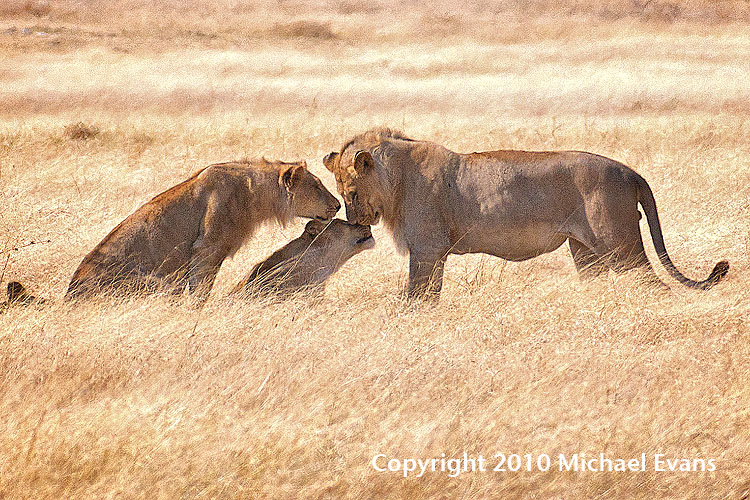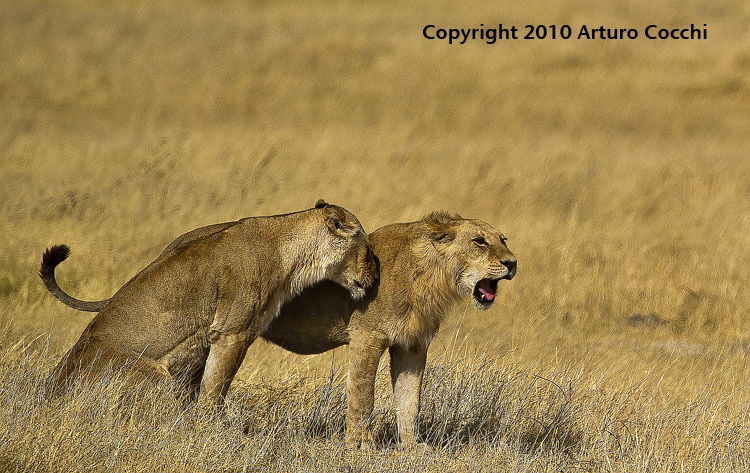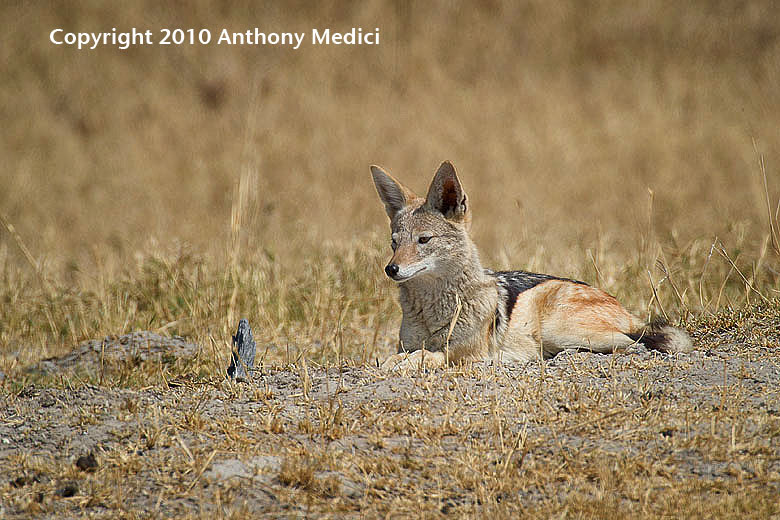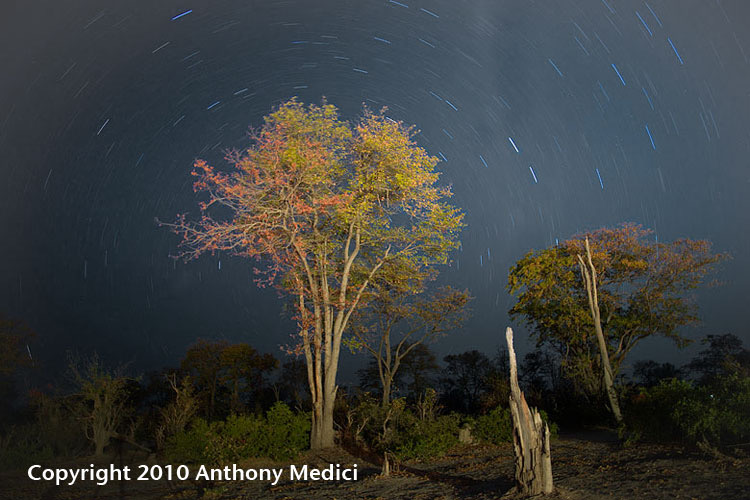Sept 12--Another quiet morning, but one that that ended with finding a pride of nine lions with a huge, beautiful male. Not much to say other than we were with the long lenses a lot, as the lions kept well away from us.



And another quiet afternoon.

So perhaps it's a good time to write about the difference between safaris in different areas of Africa. I'm going to describe six different areas that are target rich for wildlife shooters:
The best known of the African parks is the Serengeti. It's also the place I'd tend to suggest last to people as a first safari experience. That's because the parks in Tanzania are tightly regulated, and Serengeti is huge. What that means is that you can't drive off road (your driver will be arrested and fined US$500, so I hope you're a very good tipper if you try to talk them into violating the regulations). And the road system in the Serengeti isn't exactly dense. So you spend long periods of time driving down roads and seeing distant animals. If you go to the Serengeti, bring the longest lens you can, you'll need it. That's not to say that things don't happen near the roads sometimes, but when they do, there will be a dozen or more vehicles on the sighting very quickly. Indeed, things drivers look for are large quantities of vultures circling (kill) or large quantities of Land Cruisers stopped (usually means a cat). On the plus side, the Serengeti is very photogenic, and many of the huge open landscapes you've seen in safari images are probably from that region.
Also within Tanzania is the Ngorongoro crater. This is the caldera of a volcano in which a huge variety of animals have congregated and formed a miniature African ecosystem within an ecosystem. Pretty much everything of interest can be found in the crater, including the uncommon rhino, but again it's "stick to the roads" and "lots of vehicles on every sighting." It's better than Serengeti in the sense that the area isn't huge, and it does have a reasonable density of roads, so things do tend to happen near a road. But it's become much like an overcrowded drive-through zoo. Getting good sight lines without other vehicles in them is tough. And if you sit on a sighting for a long time, a ranger will come shoo you away.
But Tanzania is a stable country, has a decent infrastructure in support of tourism, and has (mostly) a dedication towards trying to keep the wilds wild. Those are all good things. But the experience has degraded over the years due to the quantity of tourists coming through those two most popular areas. I should also mention that most safaris are in closed vehicles in Tanzania, though there are still plenty of open vehicles out and about.
In Kenya the Serengeti leads into the Masai Mara. The river between the two countries is where the water crossings of the big annual migrations take place, and made notorious by all of National Geographic's various over anthropomorphized stories of Wildebeests surviving the crocs patrolling the riverbanks. The terrain on the Kenya side is a little more hilly than the Serengeti, but the good news is that some modest off-roading is tolerated. The bad news is that there are a lot of low cost "safaris" based on four-wheel drive camper vans coming down from Nairobi, and the guides driving them know nothing about what it is they're in the middle of and don't have much respect for the terrain or the animals. More than once I've had one of these guys come flying into a cat sighting and scare the animal off, then chase after it. If you can't get the idea from that description: Kenya doesn't regulate like Tanzania does. The "good" operators try to do the right thing, but there are too many "bad" operators in the Mara now.
South Africa has Kruger, which is a lot like a very bushy Serengeti (tightly regulated, no off-roading, hard to get solid sightings on animals with the vehicle positioned as the photographer wants it to be). Bushy isn't good for a tightly regulated area, as it means if the animal isn't right on the road, you're dealing with sticks and twigs and branches and leaves and everything else conspiring to block your shots.
Which brings me to the reason why I run my wildlife workshops in the private reserves of South Africa and in Botswana. In the South African private reserves you use fully open vehicles, which is nice (as long as you're ready to deal with the support issues). The preserves all are adjacent to Kruger, so the animals are wandering between the preserves and Kruger all the time without knowing where they are. But the preserves allow offroading to position a vehicle, have guides and trackers who are driving through the same areas every day and know the stories of almost all the animals on their preserves. As far as I'm concerned, four to six days at the right lodge in Sabi Sands or Primavarti is by far the best entry level safari experience you can book, especially if you arrange to have a private photography vehicle. By far. You will photograph pretty much all the animals you want to, and you will do so up close and with shorter lenses than you need elsewhere. For more on the private reserves, check out my blog for the South African workshop.
Botswana is like a mix of the best of the Mara and the best of the South African private reserves. Some of the area we traverse is National Park and fairly tightly regulated. Outside of Chobe National Park, there's some tolerance for positioning vehicles, though not the outright offroading you do in South Africa's private reserves. Moreover, except for perhaps two areas (Xakanaxa and Chobe), there isn't a lot of visitation, so you don't see a lot of other vehicles and don't tend to get the congested sightings you do in Tanzania and Kenya. Heck, we were on a pack of wild dogs right next to the road outside the park near Maun and only one other vehicle came by and stopped to join us. Botswana is still a pretty "wild" experience compared to the other great game places in Africa. Botswana also has private concession areas, too. And in those, as you'll soon learn, you can do other things that are interesting and nearly impossible in some of the better known African safari destinations.
